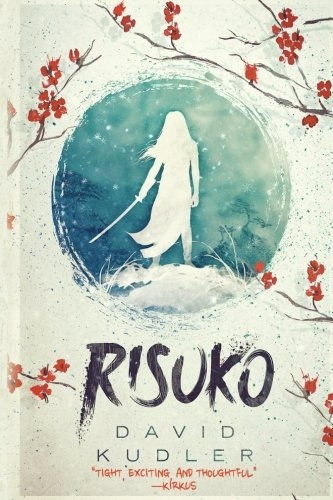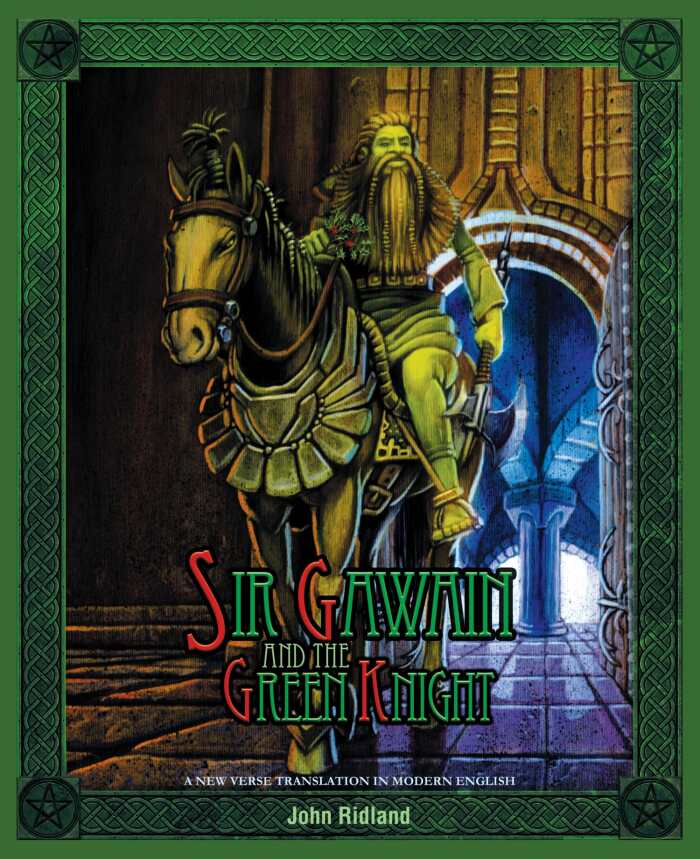From Brain Implants to Green Knights, New YA Shows Busy Lives of Fictional Teenagers
Who says teenagers are carefree? What with homework, trying to get your driver’s license, and dealing with the new memories of a different person that scientists just implanted in your brain, life can get pretty stressful. So for those moments when you need to take a break from boarding school blues or that dastardly green knight that won’t leave you alone, pick up one of the young adult books reviewed in our Fall 2016 issue, and get lost in someone else’s troubles.
Shame the Stars

Guadalupe Garcia McCall
Lee & Low Books
Hardcover $19.95 (320pp)
978-1-62014-278-3
Buy: Local Bookstore (Bookshop), Amazon
In this riveting historical novel, eighteen-year-old Joaquín del Toro has everything he could possibly dream of: a rich inheritance, a beautiful girl he is madly in love with, and the esteem and love of his family. But when trouble arises on the Mexico-Texas border in 1915, Joaquín’s world is changed irreparably. Not only does Joaquín lose his love, Dulceña, as their families fight in the midst of the new conflicts, but Joaquín is suddenly faced with a moral dilemma unlike any he ever faced. Should he support the Texas Rangers, who are fighting Tejano insurgents, and whom his father staunchly supports? Or should he take a stand against the Rangers, especially when they turn their attention to Joaquín’s own home?
Shame the Stars is a richly imagined historical novel that focuses on the complicated politics and fortunes of one family in particular. Loosely based on Romeo and Juliet, the story looks at the shifting alliances and suspicions during the period of Mexico’s revolution, and the complicated figures of the Texas Rangers. The style of the prose is simple yet effective, with rich details from the time period in which the novel is set. McCall adds additional flavor to the work in the form of letters, journal entries, and newspaper clippings that further enhance the story and give a sense of the immediacy and urgency of the conflict.
Perfect for fans of both retellings and historical fiction, Shame the Stars is a fast-moving drama that, while drawing on one of Shakespeare’s most famous works, plays by its own rules.
STEPHANIE BUCKLIN (August 26, 2016)
Risuko
A Kunoichi Tale

David Kudler
Stillpoint Digital Press
Softcover $12.99 (230pp)
978-1-938808-34-0
Buy: Local Bookstore (Bookshop), Amazon
A century of civil war has devastated Japan, but Kano Murasaki has grown up far from the conflicts and battles that rage in the nation. Nicknamed “Squirrel,” or Risuko, all the young girl wants to do is climb trees as she grows up in the Serenity Province. And yet, Risuko finds herself drawn into the war and handed responsibilities and expectations that she had never dreamed of when her innocuous hobby—tree-climbing—suddenly draws the attention of a powerful lady.
Now, Risuko finds herself pulled into a realm where the stakes are higher and the world more complicated and deadly. While some in her community believe that she can “bring victory” and become “a very special kind of woman,” Risuko longs to return to the simplicity of her life before. And yet, she finds herself in the center of the conflict, with the power in her hands to either reunite the nation for good, or to destroy it entirely.
Risuko is an artfully crafted novel that evokes a heavy sense of place and enchantment. The world in which Risuko lives is filled with lords and ladies, spies, and complicated battles, not all of which are fought out on the field. Lady Chiyome especially is an interesting figure, with a depth that is mirrored in the complicated relationships in the rest of the tale. Risuko becomes an interesting blend of both the historical and the magical, and the stakes of the story are enormous. In turn, Risuko’s development and evolution are fascinating to watch in this powerful and relentless coming-of-age adventure.
STEPHANIE BUCKLIN (August 26, 2016)
Stealing Indians

John Smelcer
Leapfrog Press
Softcover $13.95 (200pp)
978-1-935248-82-8
Buy: Amazon
In a riveting work that Chinua Achebe calls “a masterpiece,” four Indian teenagers are taken from their homes all over America and shipped to a faraway boarding school for Indians to begin a new life. To make them “less Indian,” their kidnappers—government men in suits with slips of paper that the children’s parents often couldn’t even read—take the children from their original homes and send them away to distant locales, ostensibly to help them escape poverty and lack of opportunity. The children enroll in a school at Wellington, a place that is desolate, gloomy, and cruel. The purpose of Wellington seems to be to eradicate the “Indian”—to assimilate the children to American culture while driving out their heritage.
More than just a story of survival, Stealing Indians is focused on the changing, shifting, and even disappearing identities of the four young teens, who must rely on and trust one another as they navigate their new challenges. Without their connections to home, the young teens adapt to their new world, and the institution behind their kidnapping and forced journey seems to have intentionally orchestrated this crushing of their old senses of self. A commentary on colonialism and oppression, Stealing Indians moves beyond a survival tale by plumbing the depths of the teens’ psychology as they struggle forward in this new world. Ideal for anyone looking for a rich adventure story with depth and heart, Stealing Indians is a work that engages and challenges until the very end.
STEPHANIE BUCKLIN (August 26, 2016)
Memory Girl

Linda Joy Singleton
CBAY Books
Hardcover $17.95 (396pp)
978-1-944821-08-1
Buy: Amazon
Where does one identity begin and another end? In Memory Girl, the inhabitants of ShareHaven do not really die—at least, their memories do not. The scientists in that community have figured out how to store and then transfer the memories of a deceased person into a new body. But this body is no blank slate: instead, the scientists upload the memories into an existing person, a teenager who joins a Family and receives the memories of one of its deceased members.
Jennza is a fourteen-year-old teenager who tries to hide the fact that, unlike many of her excited peers, she is anxious about the upcoming change. After the transfer of memories, she will no longer be called Jennza—and so who will she be? While others see the joining of a Family as a way to finally come into their own identities, Jennza feels the transfer is much more complicated. And while her friends have an easier time of assimilating into the community, Jennza has always found herself stretching and yearning for just a little more, and indulges this feeling in little rebellions like exploring the other side of the Fence.
“No one dies anymore,” Jennza says early on in the novel. But Jennza’s great fear seems to be not physical death, but the death of her self. Though it seems unusual at times that Jennza would be the only one to question the logic of the memory transfer, and to fear its repercussions, this in turn makes Jennza a highly relatable character to navigate this dystopian world. Memory Girl is a gripping, action-packed science-fiction work that is relentless in its suspense, ideal for those who are drawn to smart thrillers that ask difficult questions.
STEPHANIE BUCKLIN (August 26, 2016)
Investigating Julius Drake

Daisy Harris
Triton
Softcover (232pp)
978-1-62649-448-0
Buy: Amazon
In this touching and poignant coming-of-age story, fourteen-year-old Henry Walker enters the famed Clinton Academy on a scholarship. Brushing shoulders with the rich, the entitled, and the spoiled, Henry finds himself trying to hide his more humble background and his inner secret. At first more interested in fitting in than standing out, Henry squelches his desire to find authenticity in favor of courting the esteem of the students around him. But as time goes on, his fascination with the charming, attractive, and highly troubled Julius Drake grows, and Henry finds himself drawn into a world that will forever change him.
Investigating Julius Drake is a gentle and yet challenging piece of LGBTQ fiction that also investigates issues of class, bullying, and authenticity. As Henry grows closer to Julius, the two launch an investigation into “The Other Woman,” a mysterious classmate who is bullying other students on social media, and who even drove one classmate to attempt suicide. The background of the investigation—and the high stakes involved—provide an engaging backdrop to the exploration of Henry’s own true identity, and his slow realization that, to take a stand for others, first you must be authentic to yourself. Julius himself is also an interesting foil for Henry, who is more tentative, more hesitant, and at times more stable than Julius, but who learns to lean into his own brand of courage and character by Julius’s carefree example. An ideal read for those interested in both suspenseful mysteries and in literature that navigates difficult issues, from coming out to peer pressure.
STEPHANIE BUCKLIN (August 26, 2016)
Sir Gawain and the Green Knight

John Ridland
Able Muse Press
Hardcover $29.95 (124pp)
978-1-927409-76-3
Buy: Local Bookstore (Bookshop), Amazon
This well-known classic is translated into modern English verse in this enchanting and captivating book. The activities and challenges faced by the knight Sir Gawain are described in great and sometimes graphic detail as the story moves between what the author calls “hunting” and “bedroom” (interior) scenes. The story follows Gawain’s struggles to live up to the high standards of a knight while he also struggles for survival in the midst of his human frailties and weaknesses. The narrative is structured into four parts, as in the original, each centered around a different event or tale, and even includes a few black-and-white illustrations of the scenes at certain key breaks.
John Ridland, who taught English at the University of California, Santa Barbara, for over forty years, here delivers a version of Sir Gawain and the Green Knight that covers every word of the original and preserves the same line numbering. What gives this translation life, however, is Ridland’s meticulous care in crafting the meter and rhythm of the translation, using tools such as judicious alliteration. The result is a text that preserves the lyrical quality of the original, even if the original meter is no longer relevant. The book also contains Ridland’s introduction and notes, helping to shape the understanding of this text. The resulting work is a must-read for anyone interested in tales of King Arthur, medieval knights, and the wondrous folklore of that period.
STEPHANIE BUCKLIN (August 26, 2016)
Stephanie Bucklin

